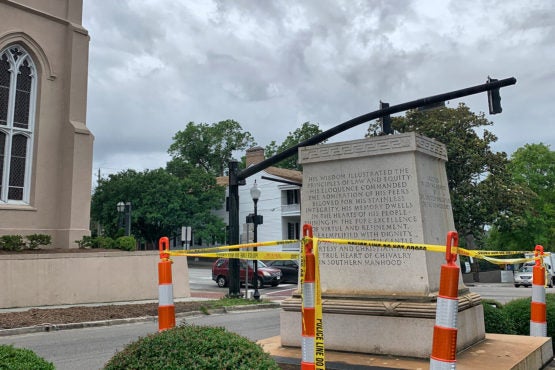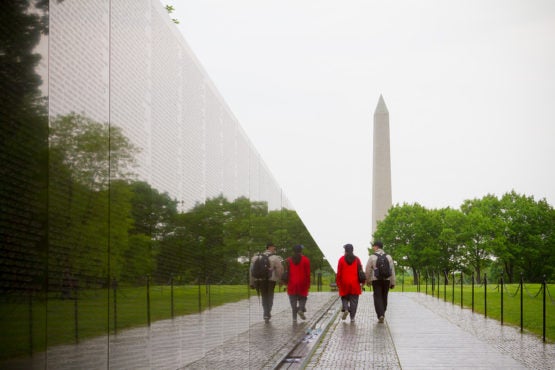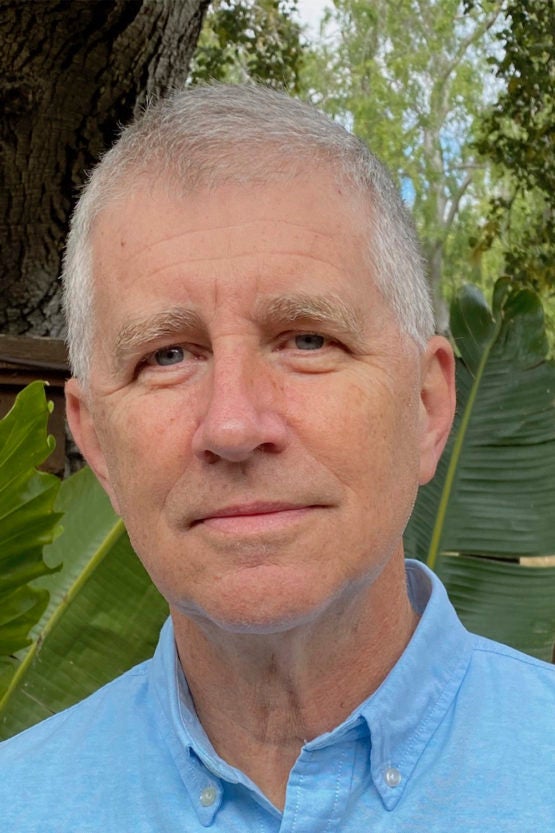Controversies over Confederate monuments and memorials are part of an overdue racial reckoning for America, says Stanford historian
As Confederate monuments and memorials are toppled across the United States, Stanford historian James T. Campbell says it is important to think historically not only about the past but also about our own time and what future generations might say about us.
As people across the United States confront the nation’s legacy of slavery and systemic racism, monuments and memorials honoring the Confederacy have become political flashpoints, with some demanding their removal as symbols of racial oppression and others warning of an attempt to “erase” history and heritage.
According to Stanford historian James T. Campbell, most of these memorials – of which there are still well over a thousand scattered across the U.S., many in states that did not actually secede – were erected not in the immediate aftermath of the Civil War but in the years 1890 between 1915. This period, Campbell points out, was the same era that saw the violent restoration of white supremacy in the South, disfranchisement of Black voters, legal segregation and a dramatic surge in lynchings.
“Understanding that historical context makes it a lot harder to claim that these monuments and memorials are simply ‘heritage,’ innocent of any racial meaning,” Campbell said.
Here, Campbell discusses the historical context in which these monuments were created and how they have become proxies in debates about racial injustice and anti-Black racism today.
Campbell is the Edgar E. Robinson Professor in United States History in the School of Humanities and Sciences. His research focuses on African American history and the legacy of slavery in America. He also examines the ways in which societies tell stories about their pasts, not only in textbooks and academic monographs but also in historic sites, museums, memorials, movies and political movements.
One can scarcely pick up a newspaper today without reading about another monument or memorial being targeted by protesters or removed by city officials. Can you explain what is going on?
We’re kind of having a memorial moment, aren’t we? As a historian, I think there are two distinct questions here. The first is to understand the history of different monuments and memorials – the circumstances in which they were created, the stories they were designed to tell or to suppress. But it’s also important to think historically about our own time. Most of the monuments that have come down in recent years – I’m thinking particularly about monuments that honor the Confederacy – have stood for more than a century. So the fact that we are arguing about them now suggests that something has changed.
How did all these Confederate monuments and memorials come to be and why have they become so controversial now?
There has been a lot of great scholarly work on the Civil War in American memory, and on Civil War monuments in particular. Some of those insights have become broader public knowledge in the context of recent debates. Most, or at least many, Americans now understand the role that Confederate memorials and monuments played in the consolidation of ‘Lost Cause’ ideology, which was a concerted campaign to shift the memory and meaning of the Civil War away from themes of slavery and emancipation (which manifestly were the primary cause and consequence of the war) to things like “state’s rights” and the gallantry of ordinary soldiers. People are also increasingly aware that most Confederate monuments and memorials were not built in the immediate aftermath of the war but a generation later, in the years between 1890 and 1915. This was the same period that saw the violent restoration of white supremacy in the southern states, including formal disfranchisement of black voters, the creation of legal segregation and the lurid horror of lynching. Understanding that historical context makes it a lot harder to claim that these monuments and memorials are simply “heritage,” innocent of any racial meaning.
Given what you’ve just said, I suppose the question is not simply why these monuments are coming down today but why it took so long. Why is this happening now?
The short answer is that the stories these monuments told – that the Civil War was a romantic clash between heroes in blue and gray, that the attempt to extend full citizenship to the formerly enslaved during Reconstruction had been folly, that white supremacy was the natural order of things – were widely believed, and not only in the South. It has taken a long time to expunge these notions from American culture and politics. I’m not sure we’re completely there yet.

The pedestal remains, but the statue of Confederate George Davis in downtown Wilmington, NC, is removed. June 25, 2020. (Image credit: Getty Images)
As for why these monuments are tumbling now, I think there are a lot of proximate causes: the photos that Dylan Roof posted of himself online prior to his murderous rampage in Charleston’s Mother Emanuel AME Church, clutching his guns and the Confederate battle flag; the “Unite the Right” march in Charlottesville, where we saw Confederate flags mingled with Nazi swastikas; and now the spectacle of George Floyd being murdered before our eyes. All of these incidents, and countless more like them, have provoked a long-overdue reckoning with our racial past, as well as with the brute fact of racial injustice in the present.
I also think there are some deeper explanations here. For the last two or three hundred years, rights claims have generally been articulated in the language of liberalism, a language that is both individual and universal: ‘As a human being, I am endowed with certain unalienable rights, irrespective of the color of my skin, my sex’ and so forth. Today, we see rights claims increasingly cast in the language of recognition, in demands to have the collective identities that we cherish acknowledged in the public sphere, including our collective experiences of suffering and victimization. In that kind of intellectual and political climate, symbols that celebrate or demean become extremely salient – not only monuments and memorials, but also things like museums, the names on buildings, and so forth.
The campaign to remove controversial monuments and memorials has attracted a lot of criticism – charges that we are “erasing” history or imposing our own values and perspectives on people from other times. How do you perceive these concerns?
It’s hard for me to give you a general answer to that question. It depends on the particulars of different monuments and memorials. It also depends, I suppose, on who I happen to be arguing with at the time. I am certainly not a person who feels like we need to preserve monuments for their own sake. I have no principled objection to removing monuments that honor people and things that we no longer regard as honorable. But I do worry about the process by which such decisions are made. I also worry about where it ends. We are humans, after all, and our pasts, both individual and collective, include elements that are gracious and honorable and other elements that are grievous and horrifying. If we only honor paragons, we are not going to have many statues. Maybe that’s a good thing.
As for holding people in the past to present-day standards, I guess I’d put the question in a different way. What standard are we holding ourselves to? It’s easy enough to point an accusatory finger at Thomas Jefferson, patting ourselves on the back for our own superior wisdom and morality in the process. But what do we do then? What’s changed? What’s our next move after the monument has been toppled? The real challenge, it seems to me, is to use these forays into the darker corners of our collective past to illuminate the dark corners of our collective present, to recognize the ways in which we too are implicated in grievous human injustice; injustice that we too often contrive not to see. To put it simply, we need to ask what future generations will say about us.
As a historian, are there any examples of memorials or monuments that you think honor history better than others?

The Vietnam Veterans Memorial, in Washington DC, Vietnam Memorial Wall, was designed by Maya Lin and dedicated in 1982. (Image credit: Getty Images)
The more I work on these issues, the more committed I am to the idea of the “counter-memorial.” I take that term from James Young, who uses it to describe monuments and memorials designed not to impose meaning – “This is my generation telling yours what to think and feel and value” – but rather to elicit it, to provoke fresh reflection on who we are and who we wish to become. Maya Lin’s Vietnam Veteran’s Memorial has some of that quality. The nearby World War II memorial does not, at least in my opinion.
My current research takes me often to Philadelphia, Mississippi, the site of one of the most notorious crimes of the Civil Rights era, the Klan-orchestrated murder of three voting rights activists in 1964. Like other southern county seats, the town has a Confederate monument on the courthouse lawn, erected in 1912, a lone soldier atop a high pedestal, rifle at the ready. Some years ago, a storm blew him off, leaving a bare pedestal. You couldn’t look at that pedestal without asking what belonged up there. Should you put the soldier back? Should you put the murdered Civil Rights workers in his place? It struck me that nature had produced the perfect memorial for this small town’s still painful, still unreconciled history. I said that to everyone in town who would listen – just leave it be.
Did they listen?
Nope. The Confederate soldier is back on his perch. At least for the time being.

